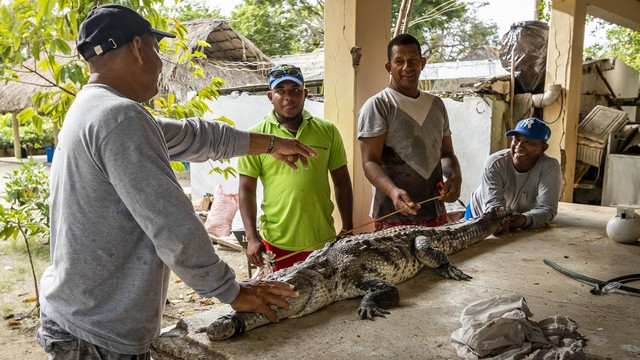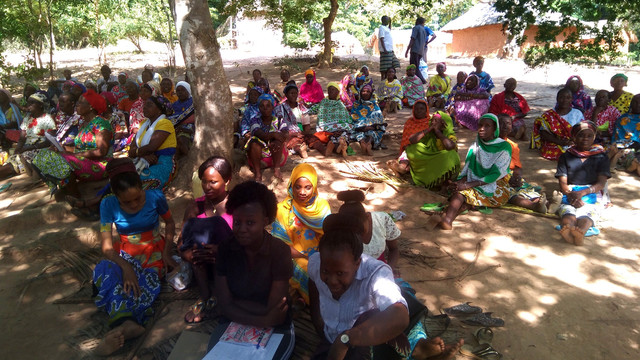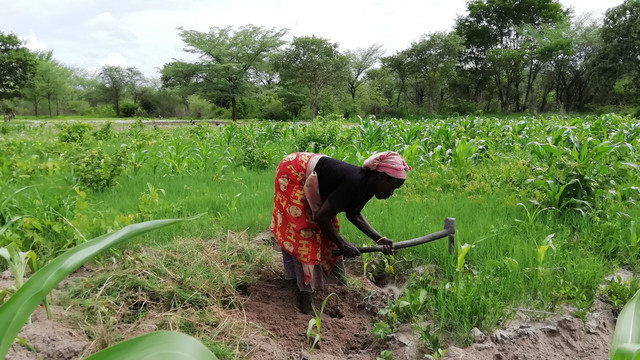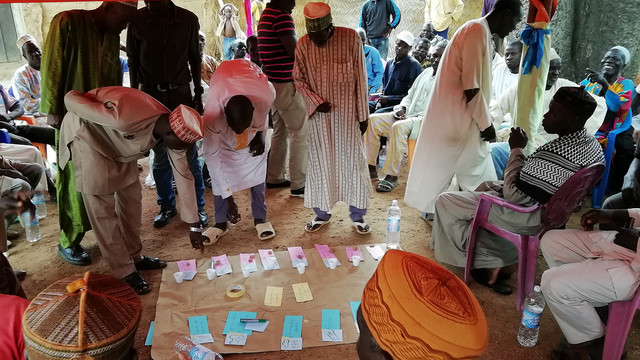Communities, livelihoods and sustainable wildlife management
Conservation in Africa is failing. Despite a growth in formal protected areas, wildlife populations are declining. Illegal wildlife trade is a contributing factor but masks wider issues of land conversion, corruption and regressive policies that fail to make wildlife an economically viable land use option for local people.

Local villagers receive wildlife training in the Mbarang'andu Wildlife Management Area in Tanzania, which incorporates seven villages. (Photo: WWF/USAID Biodiversity & Forestry, Creative Commons via Flickr)
IIED has worked for more than two decades to document the lessons learned on the necessary conditions to support community-based wildlife management.
From 'Whose Eden?' in 1994 to 'Wildlife Wild Livelihoods (PDF)' in 2017, the lessons are clear: to effectively manage wildlife communities need to have secure rights and decision-making authority; and the benefits from engaging in conservation (whether financial, cultural, political or other) need to outweigh the costs of living with wildlife.
Sustainable solutions that meet both conservation and human development goals require an inclusive and equitable approach to wildlife management, where local communities are central to decision-making processes.
In addition to our significant body of work on engaging communities in tackling illegal wildlife trade, we are:
- Working with small tourism enterprises around Bwindi Impenetrable Forest in Uganda to help local people capture a greater share of the benefits that are generated by gorilla tourism
- Exploring innovative options for commercial insurance to mitigate the cost to small farmers in Kenya and Sri Lanka of damage caused by elephants and other wildlife
- Exploring the drivers of wild meat as a food choice in Cameroon and helping to design better “alternative livelihoods” projects that respond to those drivers, and
- Working with UN Environment and partners to explore land use options that allow people and wildlife to co-exist in Southern Africa.
We are proud to be a member of the Collaborative Partnership on Sustainable Wildlife Management and firmly believe that achieving a balance between sustainable use and conservation is essential for securing livelihoods and protecting biodiversity.
In November 2018, IIED principal researcher told the Food and Agriculture Organization of the United Nations how we need to maximise the benefits and minimise the costs of living with wildlife to encourage communities to manage wildlife sustainably. Watch the interview below or on FAO's YouTube channel.
Related resources
Publications
Wild life, wild livelihoods: involving communities in sustainable wildlife management and combating illegal wildlife trade (PDF) – UN Environment, Rosie Cooney, Dilys Roe, Holly Dublin (2017)
The baby and the bathwater: trophy hunting, conservation and rural livelihoods, Rosie Cooney, C. Freese, Holly Dublin, Dilys Roe, D Mallon, M Knight, R Emslie, M Pani, V Booth, S Mahoney, C Buyanaa (2017), Journal article in Unasylva 249
Climate-smart people-centred conservation: a new framework for socially-just conservation in a changing climate, Dilys Roe (2017), IIED report
Climate-smart people-centred conservation: a synthesis report, Dilys Roe, Francesca Booker, Phil Franks (2017), IIED report
Climate-smart pro-poor conservation: a literature review of theory and practice, Dilys Roe, Francesca Booker, Phil Franks (2017), IIED report
Hard-won wisdom: what conservationists need to know about wildlife-related corruption, Aled Williams, Rob Parry-Jones, Dilys Roe (2016), IIED Briefing Paper
Saving Africa's vanishing wildlife: how civil society can help turn the tide, Fred Nelson, Emmanuel Sulle, Dilys Roe (2016), IIED Briefing
The trade in wildlife: a framework to improve biodiversity and livelihood outcomes, Rosie Cooney, Alexander Kasterine, Douglas MacMillan, Simon Milledge, Katarina Nossal, Dilys Roe, Michael ’t Sas- Rolfes (2015), International Trade Centre Report
Are alternative livelihood projects effective at reducing local threats to specified elements of biodiversity and/or improving or maintaining the conservation status of those elements?, Dilys Roe, Francesca Booker, Mike Day, Wen Zhou, Sophie Allebone-Webb, et al (2015), Journal article in BioMed Central
Getting it together: how some local organisations in East Africa have succeeded in linking conservation and development, Oliver Hughes, Dilys Roe, David H. L. Thomas, Beatrice Kabihogo, David Kimani Kuria, James Imbayi Ligare, et al (2014), IIED Issue Paper
'Land grabbing': is conservation part of the problem or the solution?, Tom Blomley, Dilys Roe, Fred Nelson, Fiona Flintan (2013), IIED Briefing Paper
CITES and CBNRM: Proceedings of an international symposium on “The relevance of CBNRM to the conservation and sustainable use of CITES-listed species in exporting countries", Max Abensperg- Traun, Colman O’Criodain, Dilys Roe (eds.) (2011), Symposium report
Community management of natural resources in Africa: Impacts, experiences and future directions, Dilys Roe, Fred Nelson and Chris Sandbrook (eds.) (2009), IIED Issue paper | en français
Additional resources
Blog: There’s justice in the battle for biodiversity, by James Mayers (June 2018)
Video: Wild Livelihoods – community roles in sustainable wildlife management (March 2018)
Blog, Trophy hunting under fire, by Dilys Roe (April 2016)
Blog: RIP Cecil the lion – what will be his legacy? And who should decide?, by Rosie Clooney (July 2015)
Contact
Dilys Roe (dilys.roe@iied.org), principal researcher, Natural Resources research group



